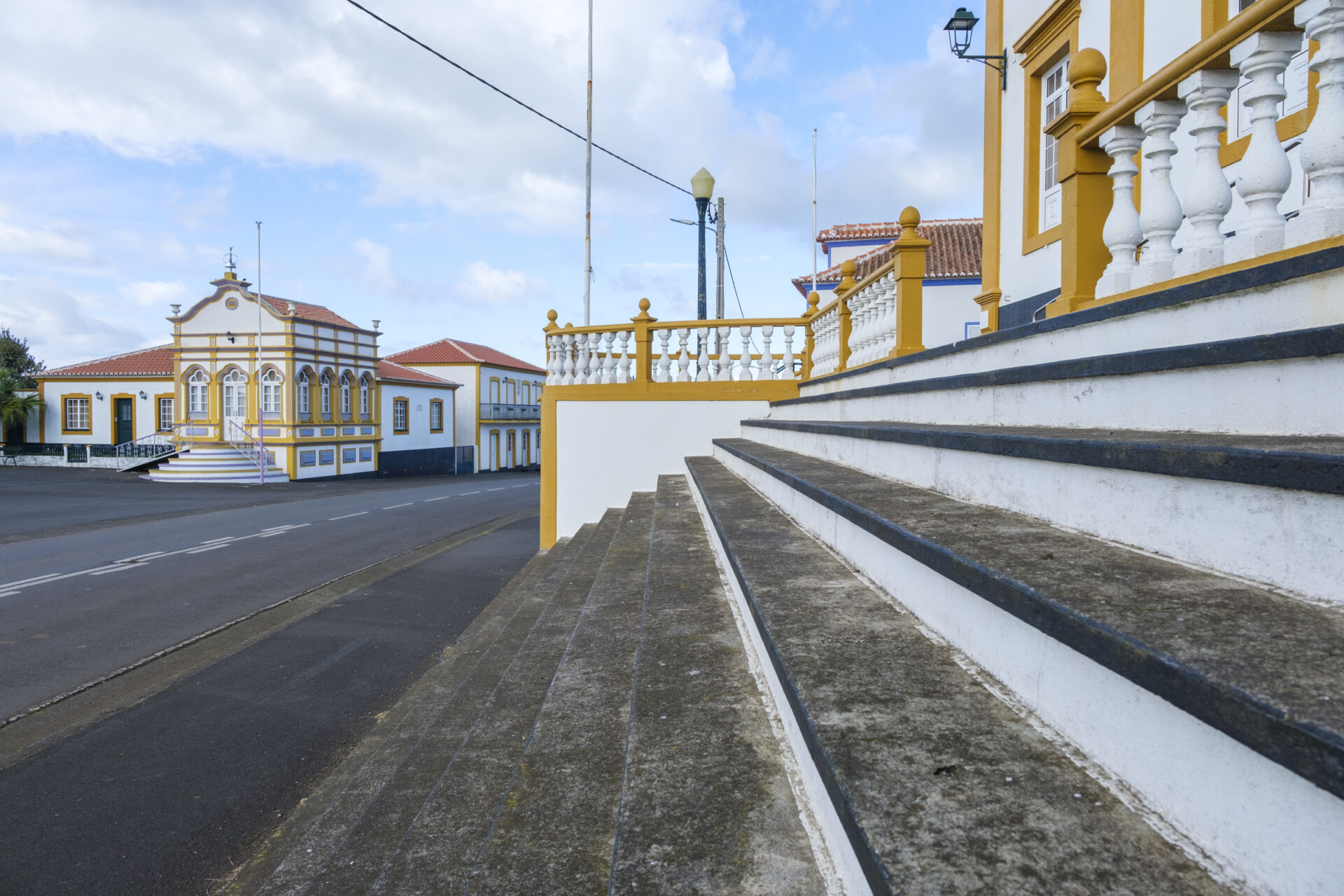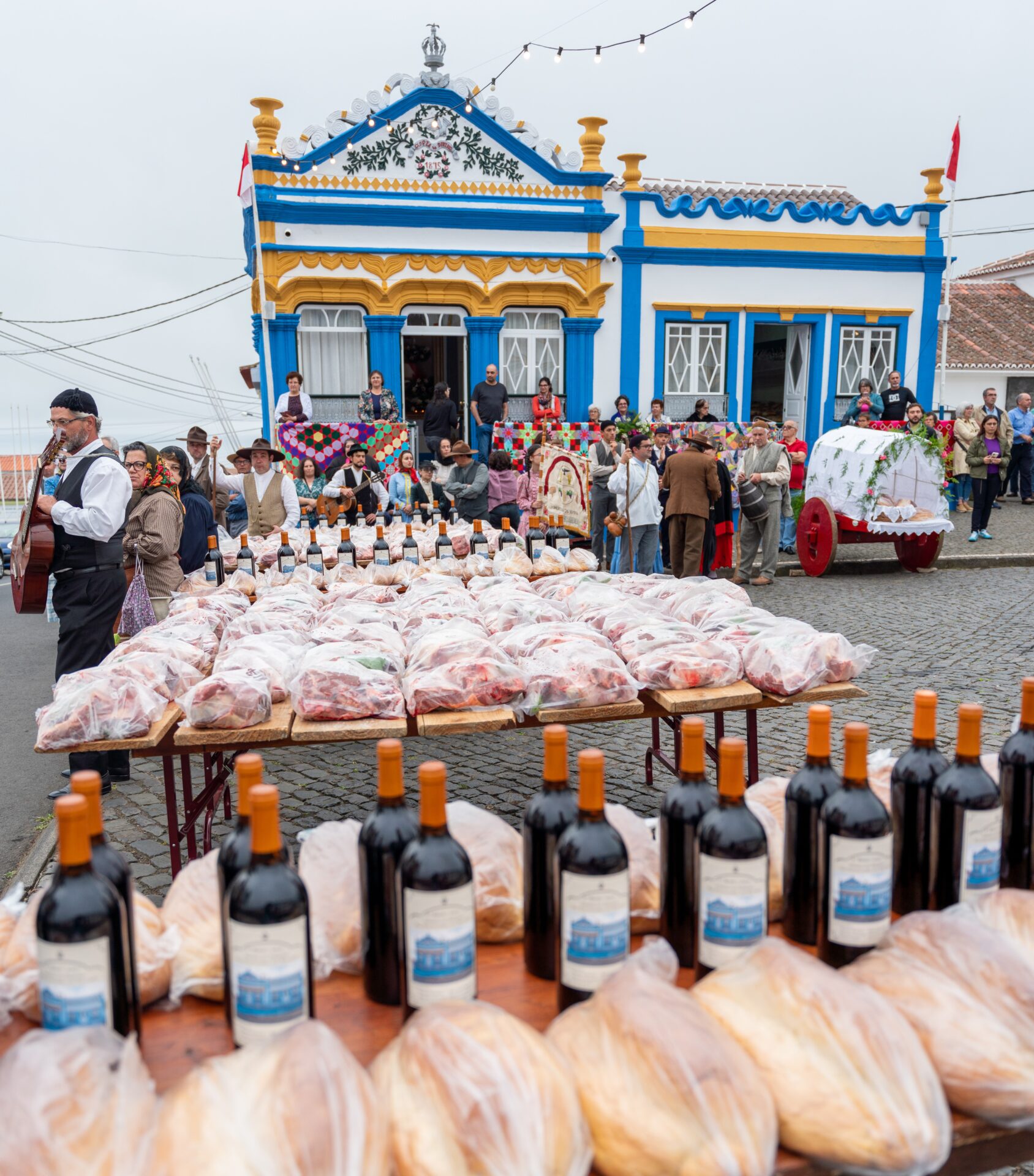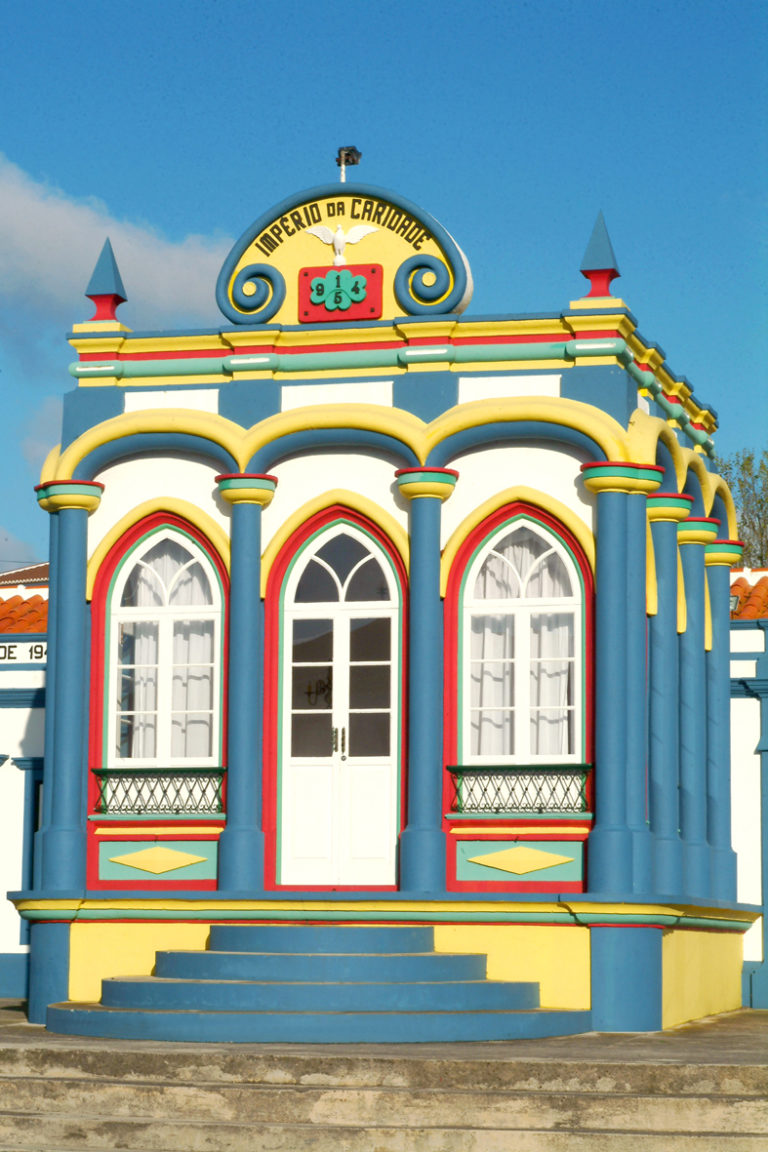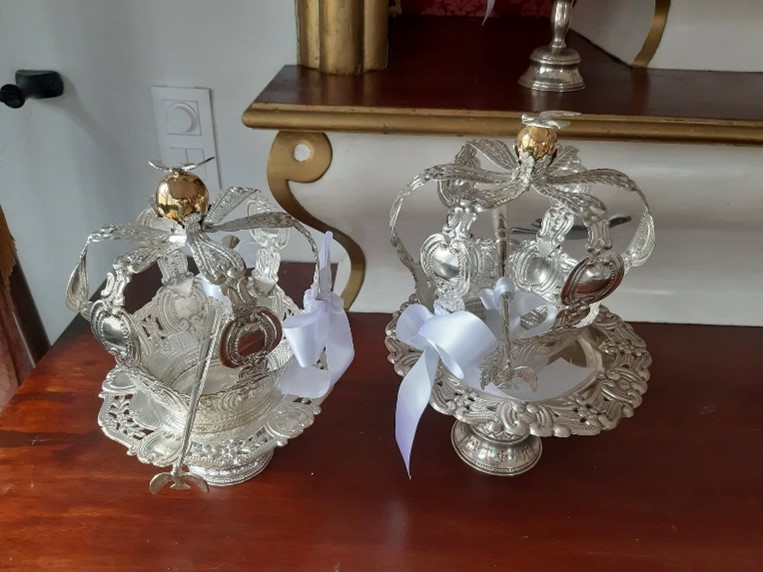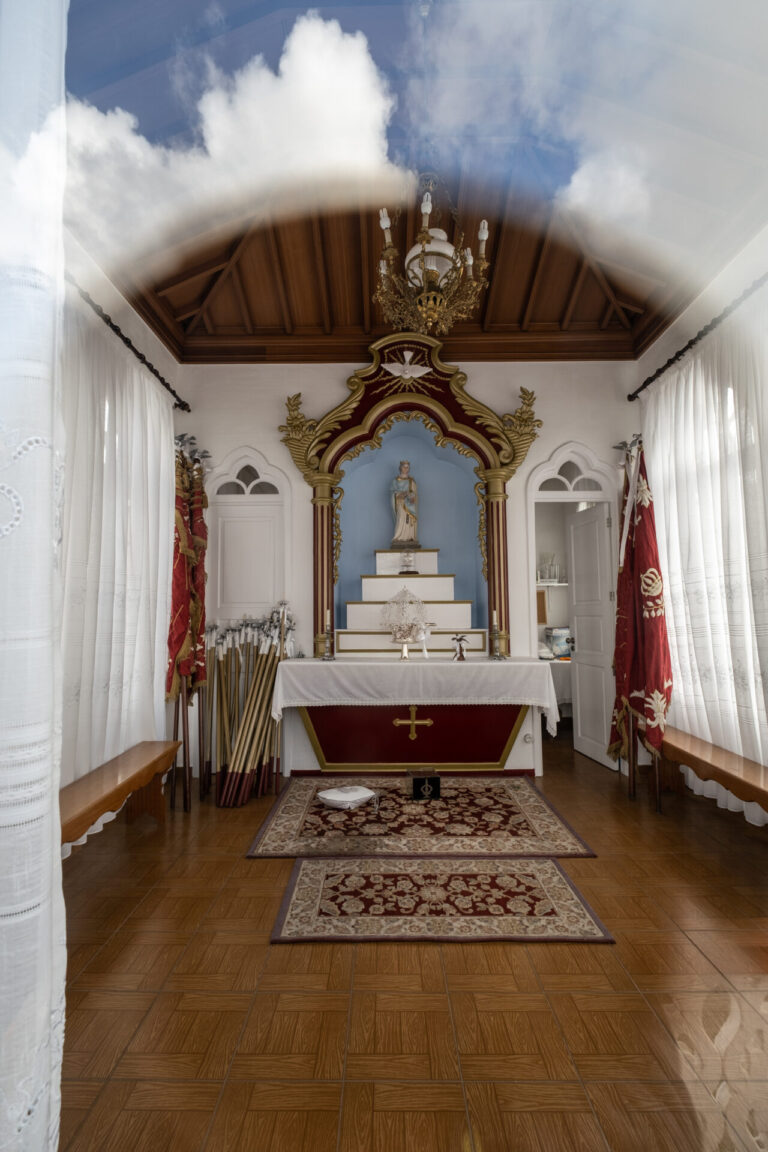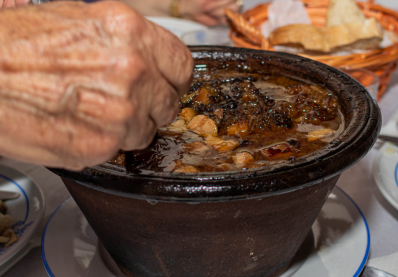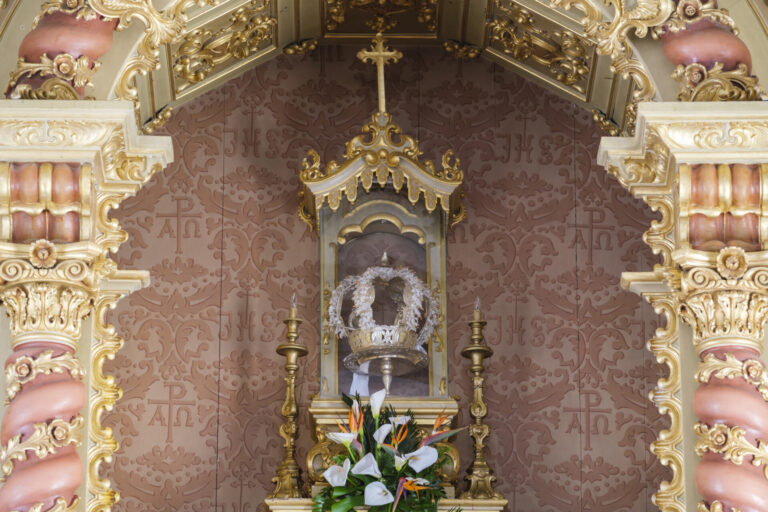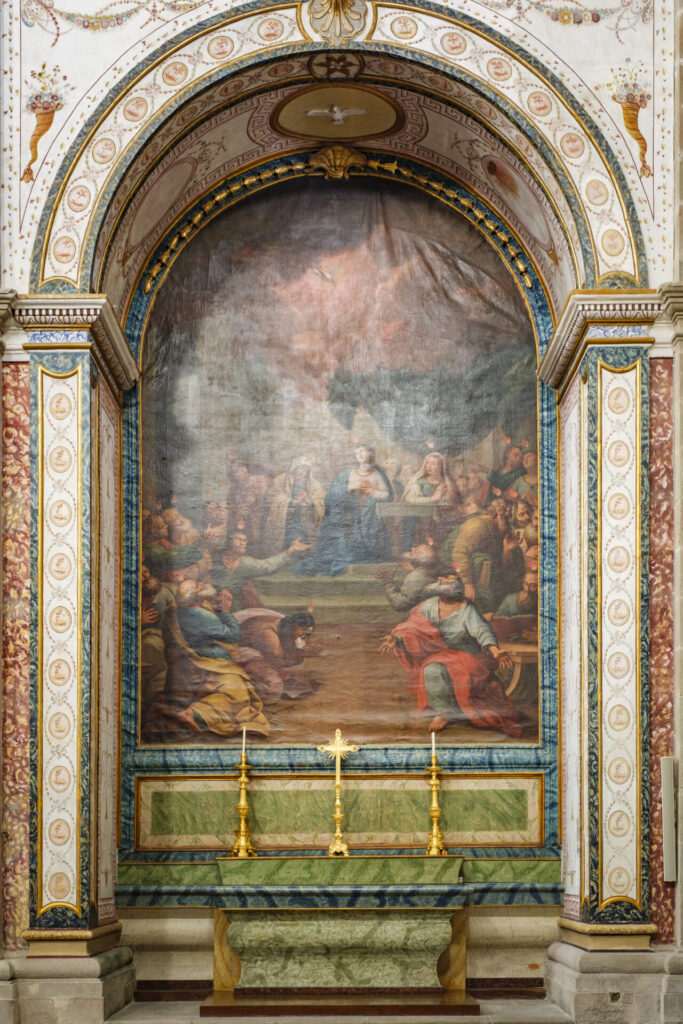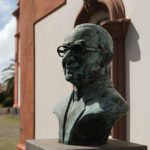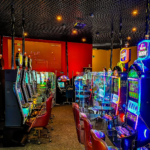The “Impérios”, or, previously, called “Treatos”, are the symbol of the Holy Spirit festivals on the Terceira island. Initially, these places of worship were made of wood, decorated with beeches and cloth and dismantled after the festival. In the second half of the 19th century, the first Empires were built in stone, the result of the generosity of emigrants from Terceira, paying their promises to the Divine. Currently, they have one or two outbuildings, which are called pantries, where party utensils are usually kept, or where “bodo” is prepared and distributed. These have a main facade, which may contain various symbols linked to the cult, such as the crown or the dove, as well as the date of its construction. This facade is always made up of three openings, one for the door and two for the windows, alluding to the three persons of the Holy Trinity, the Father, the Son and the Holy Spirit. Inside, there is the altar, where the crown is located.
